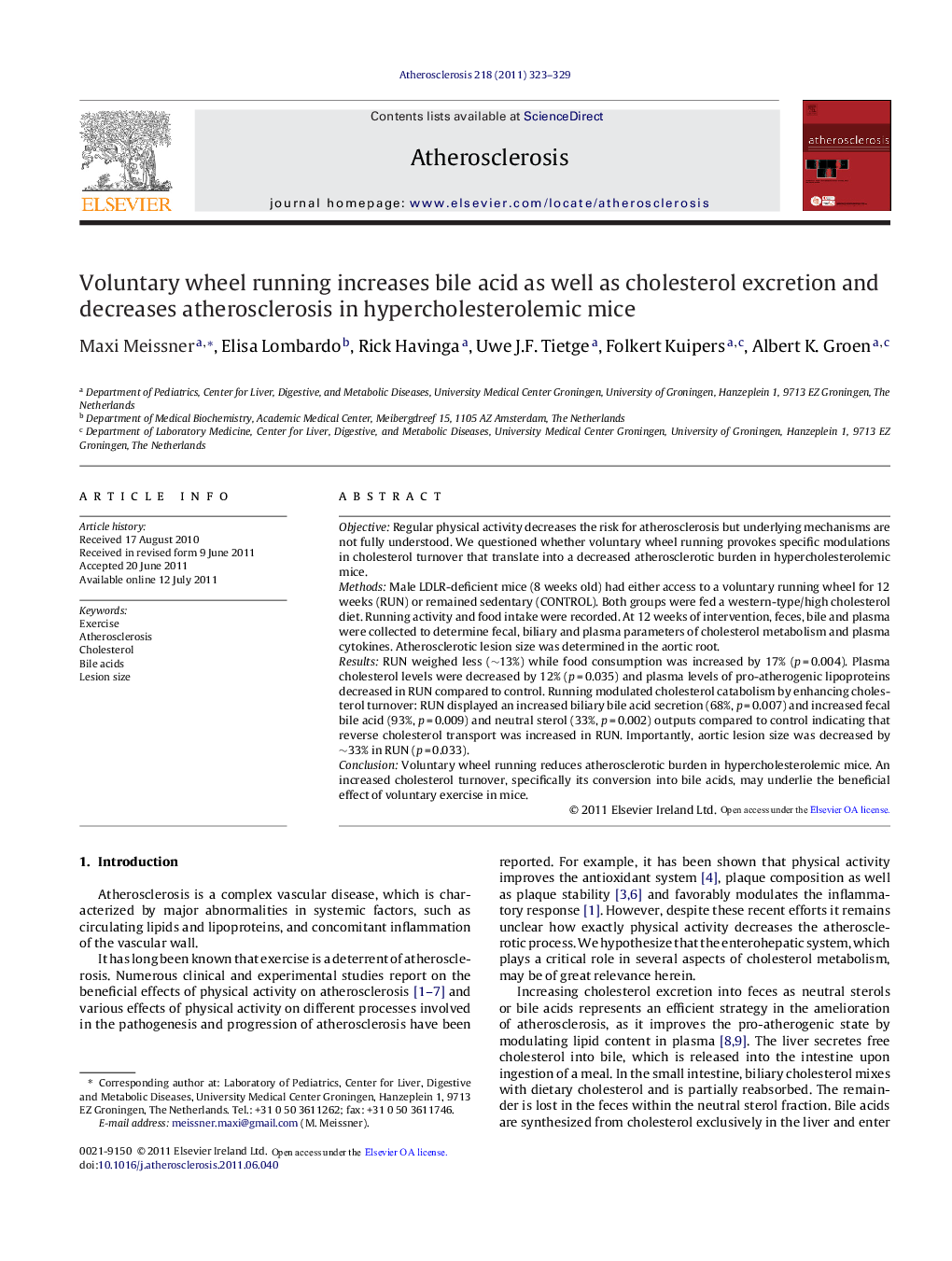| Article ID | Journal | Published Year | Pages | File Type |
|---|---|---|---|---|
| 5950057 | Atherosclerosis | 2011 | 7 Pages |
ObjectiveRegular physical activity decreases the risk for atherosclerosis but underlying mechanisms are not fully understood. We questioned whether voluntary wheel running provokes specific modulations in cholesterol turnover that translate into a decreased atherosclerotic burden in hypercholesterolemic mice.MethodsMale LDLR-deficient mice (8 weeks old) had either access to a voluntary running wheel for 12 weeks (RUN) or remained sedentary (CONTROL). Both groups were fed a western-type/high cholesterol diet. Running activity and food intake were recorded. At 12 weeks of intervention, feces, bile and plasma were collected to determine fecal, biliary and plasma parameters of cholesterol metabolism and plasma cytokines. Atherosclerotic lesion size was determined in the aortic root.ResultsRUN weighed less (â¼13%) while food consumption was increased by 17% (p = 0.004). Plasma cholesterol levels were decreased by 12% (p = 0.035) and plasma levels of pro-atherogenic lipoproteins decreased in RUN compared to control. Running modulated cholesterol catabolism by enhancing cholesterol turnover: RUN displayed an increased biliary bile acid secretion (68%, p = 0.007) and increased fecal bile acid (93%, p = 0.009) and neutral sterol (33%, p = 0.002) outputs compared to control indicating that reverse cholesterol transport was increased in RUN. Importantly, aortic lesion size was decreased by â¼33% in RUN (p = 0.033).ConclusionVoluntary wheel running reduces atherosclerotic burden in hypercholesterolemic mice. An increased cholesterol turnover, specifically its conversion into bile acids, may underlie the beneficial effect of voluntary exercise in mice.
